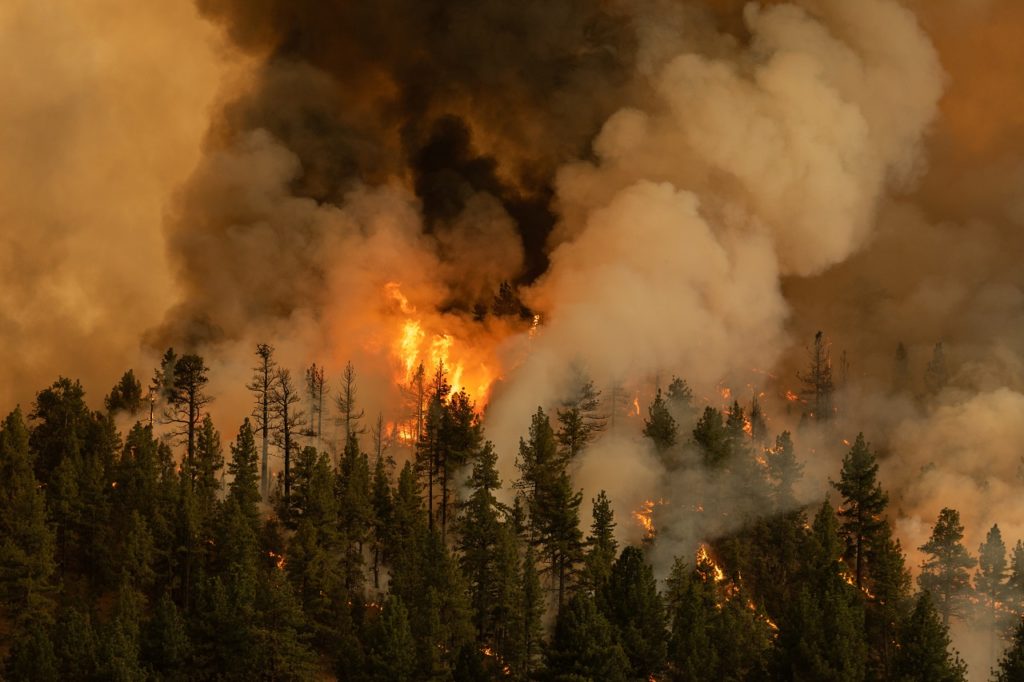We are optimists, and a new year offers opportunities for inspiration and hope. Our current challenges seem unrelenting. But even as we battle several emergencies all at once, we see bright spots of opportunity for necessary and significant progress to be made in 2022. On the climate change front, where NBI works, we know that increasingly common extreme weather events are fueled by global temperature rise from excessive carbon and other greenhouse gas emissions (GHGs). With buildings representing 39% of the global carbon footprint, we are actively working on ways to minimize emissions and limit the most severe climate impacts.
Today, we can say with credibility that we have kept 1.5 degrees within reach. But, its pulse is weak. And it will only survive if we keep our promises. If we translate commitments into rapid action. If we deliver on the expectations set out in this Glasgow Climate Pact to increase ambition to 2030 and beyond. And if we close the vast gap that remains, as we must.
-Alok Sharma, COP26 Closing Plenary

The most recent report from the Intergovernmental Panel on Climate Change (IPCC) strongly warned us that global temperatures could rise by 1.5 degrees Celsius above pre-industrial levels by as early as 2030. It’s clear 2022 will be a crucial year to make substantial progress on building decarbonization efforts in advance of the 2030 milestone. As NBI’s staff and Board look at our goals for the year ahead, we believe the work we do with our partners and stakeholders is critical to helping companies, governments, practitioners, and others prepare for and avoid the most disastrous climate impacts. Below are a few of the trends that signal reasons to be hopeful.
We know what to do and how to do it
Efforts to decarbonize buildings leverage decades of investment in energy efficiency programs, policies, and projects that reduce energy use in both commercial and residential buildings. While carbon neutral buildings and zero energy buildings are not the same, they do share a number of characteristics. The additional requirements to achieve net zero carbon—electrification, grid interactivity, and embodied carbon—are generally well understood, but must be shared more broadly.
These topics were represented at the recent 2021 Getting to Zero Forum. The three-day event held in New York City focused on real-world solutions demonstrating building-sector climate action. Session themes reflected the urgent needs for the zero carbon movement, from aggressive policy making to private sector investment to focusing on equitable outcomes.
Marking that point in time, just one week ahead of COP 26, the efforts by New York State were spotlighted, demonstrating what innovative and effective climate action in the building sector can look like. There was a strong focus on advanced design practice, including Passive House, that make for best-in-class building performance. Discussions focused on game-changing technologies such as heat pumps (for space and water heating) and controls integration that offer viable options for lowering energy use and raising demand flexibility for the power grid. Participants from across the country shared effective codes and policy mechanisms as well finance and development models to advance building decarbonization.
Many of these themes are reflected in NBI programs and initiatives including the Codes for Climate Initiative, Advanced Water Heating Initiative, GridOptimal Buildings Initiative, and Getting to Zero in Schools—as well as programs being implemented by the building industry as a whole. What we need now is unprecedented scale, speed, and collaboration—not just a segment of the market pursuing energy-saving and emissions-reduction practices—but everyone applying net zero solutions. For that, we need effective policies to drive action and a ready workforce that can deliver.
States and cities are providing models for others to follow
Local governments leading on climate action in the building sector have been steadfastly working to achieve building decarbonization goals by engaging with a broad array of stakeholders, conducting research, and developing model policies and programs. Many of these continue to focus on energy efficiency, as well as include building decarbonization goals.
Electrification policies, which were nascent just two years ago, are being adopted by jurisdictions across the U.S., most recently in Ithaca, New York, which has committed to electrifying both public and private sector buildings by 2030. The U.S. Department of Energy (DOE) is emphasizing grid interactivity and demand flexibility with a new program and Roadmap that could save between $100 to 200 billion to the U.S. power system in the next 20 years and cut CO2 emissions by 80 million tons per year by 2030. Embodied carbon policies are now finding their way into jurisdictions such as New York, Colorado, California, and Marin County, which drive better sourcing of low-carbon materials.
The recently passed Bipartisan Infrastructure Bill includes significant financial resources aiming to reduce energy use and emissions of buildings, with DOE allocating $225 million to assist jurisdictions with energy code updates. This funding represents the most significant spending on codes ever and will ultimately impact every new building and major renovation in the country.
 The Infrastructure Bill also dedicated more than $250 million to a revolving loan fund for energy efficiency efforts. Recognizing the K-12 sector can and must play a role in our national climate strategy, we were encouraged to see an additional $500 million for helping schools reduce energy use and emissions. This includes funding for electric school buses, which can store electricity to be used to support the power grid and (once the technology is readily available) serve as a source of emergency back-up energy in a power outage.
The Infrastructure Bill also dedicated more than $250 million to a revolving loan fund for energy efficiency efforts. Recognizing the K-12 sector can and must play a role in our national climate strategy, we were encouraged to see an additional $500 million for helping schools reduce energy use and emissions. This includes funding for electric school buses, which can store electricity to be used to support the power grid and (once the technology is readily available) serve as a source of emergency back-up energy in a power outage.
Collaborations are growing stronger for market transition
Businesses and organizations serving the energy efficiency and clean energy industries have often worked together to achieve joint goals. Yet today, we are seeing collaborations at a magnitude never experienced before. Some examples of partnerships gaining traction include:
-
- the Getting to Zero Collaborative, which includes nearly a dozen professional trade organizations, reaches more than a half a million design and construction practitioners. The group is working together to spotlight net zero practices and resources.
- the Carbon Leadership Forum, out of the University of Washington, is organizing industry around advancing embodied carbon and supports Buy Clean procurement policies.
- decarbonization coalitions (including the Building Decarbonization Coalition, the Midwest Building Decarbonization Coalition, and the National Electrification Collaborative) are fostering building sector collaboration and providing support and expertise to various groups.
On a global scale, governments met for COP26 in Glasgow in November to discuss commitments and action on climate. The United Nations Environment Programme (UNEP) and the Global Alliance for Buildings and Construction launched the Buildings as a Critical Climate Solution Commitment during the convening. World Resource Institute’s The City Fix, chronicles some of the other important outcomes including building decarbonization commitments, new collaborations, and growing private equity interest in carbon neutral investments.
While these are all good signs, we are calling for an acceleration of these actions in 2022 to deliver the scale we seek. That means all building sector actors must be talking about promoting and implementing building decarbonization approaches.
Investments in the clean energy transition are prioritizing equity
Energy efficiency investments for the last three decades have largely passed over neighborhoods of low-income households and this is especially true for communities of color. The energy burden to these households is greater, meaning they pay a larger proportion of monthly income to utility bills and don’t have the means or mechanisms necessary to make the upfront investment in efficiency upgrades. As we transition to a clean energy future, more people within the building, energy, housing, and other related industries are gaining awareness of past inequities and are working to overcome them.
More and more, policymakers and program administrators are convening stakeholders and partners to explore and better understand how they need to reimagine their approaches to engage, support, and resource disadvantaged communities. In New York State, the Climate Act requires 35% of benefits from clean energy investment to go to these neighborhoods. The state is targeting 40% and working with local groups to ensure incentives and other subsidies are appropriate and directed where they are needed most.

DOE’s Initiative for Better Energy, Emissions, and Equity (E3 Initiative) and its partners nationwide will strive to transform the heating and cooling marketplace—making affordable, clean, and efficient solutions easily available across America. Likewise, diversity, equity, and inclusion have become an important focus of NBI’s operations and are becoming a more integral component of our programs and initiatives including improving diversity in our industry’s workforce.
Last year, NBI piloted the Next Gen program focused on helping more minority and female students access opportunities in the clean energy and buildings sectors, connecting them with mentors and leading firms. Twenty students joined a seven-month long cohort using a curriculum from ASHRAE/AIA as the basis for their learning. This year, NBI aims to double the cohort to 40 students.
Working better together
With humans spending more than 90% of their time indoors, it’s not surprising that market interest in occupant wellness has led to increasing interest in building standards such as LEED, WELL, and the Living Building Challenge. While NBI’s focus remains on rapidly curtailing the impact that buildings have on fueling climate change, it must also be focused on people.
As we stand at the threshold of the most important year in more than a decade for building decarbonization, our optimism is high. Our hope springs from you—design professionals, developers, building owners, policy makers, and net zero advocates—who are responding to the ‘Code Red’ alarm sounded by the IPCC.
“We are, after all, the greatest problem solvers to have ever existed on Earth. If working apart, we are a force powerful enough to destabilize our planet. Surely working together, we are powerful enough to save it,” David Attenborough, British broadcaster and writer, at COP 26.
The top banner image includes the Leslie Shao Ming Sun Field Station in Woodside, CA.
by Ralph DiNola, CEO, New Buildings Institute
Did you enjoy this content? Consider supporting NBI’s work with a donation today.
